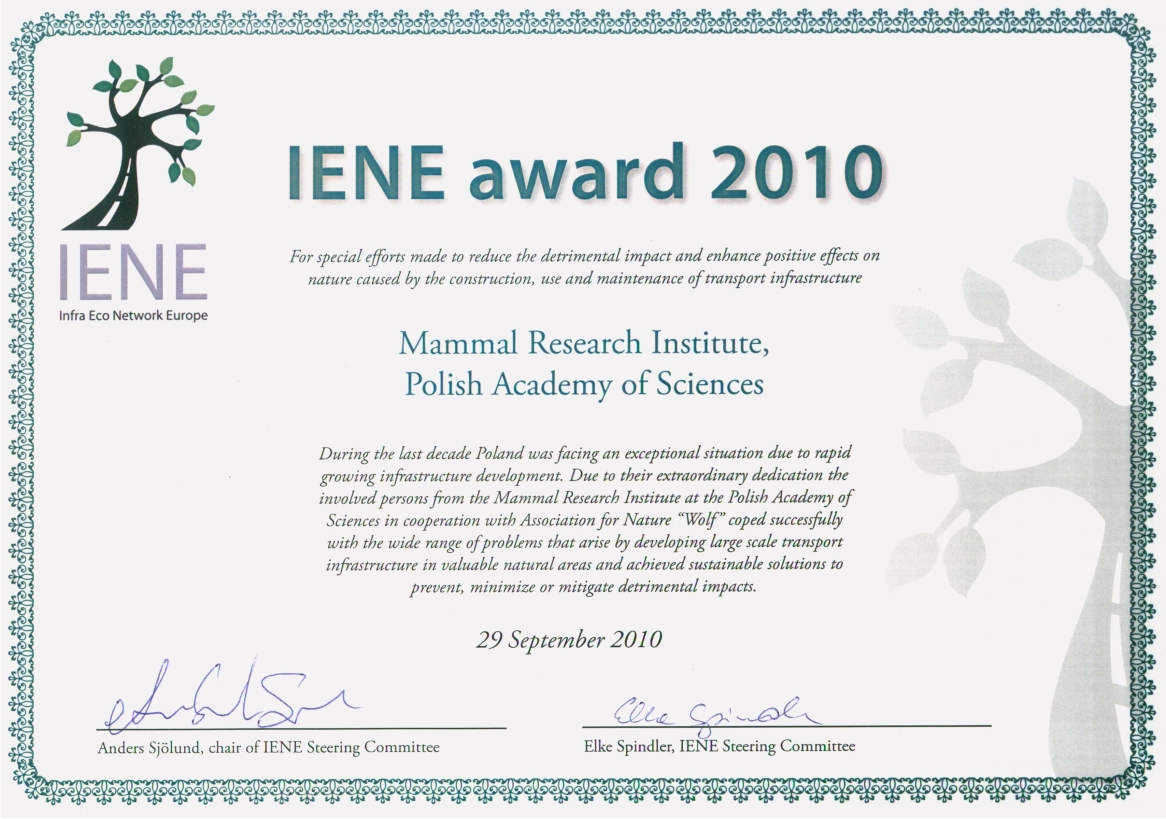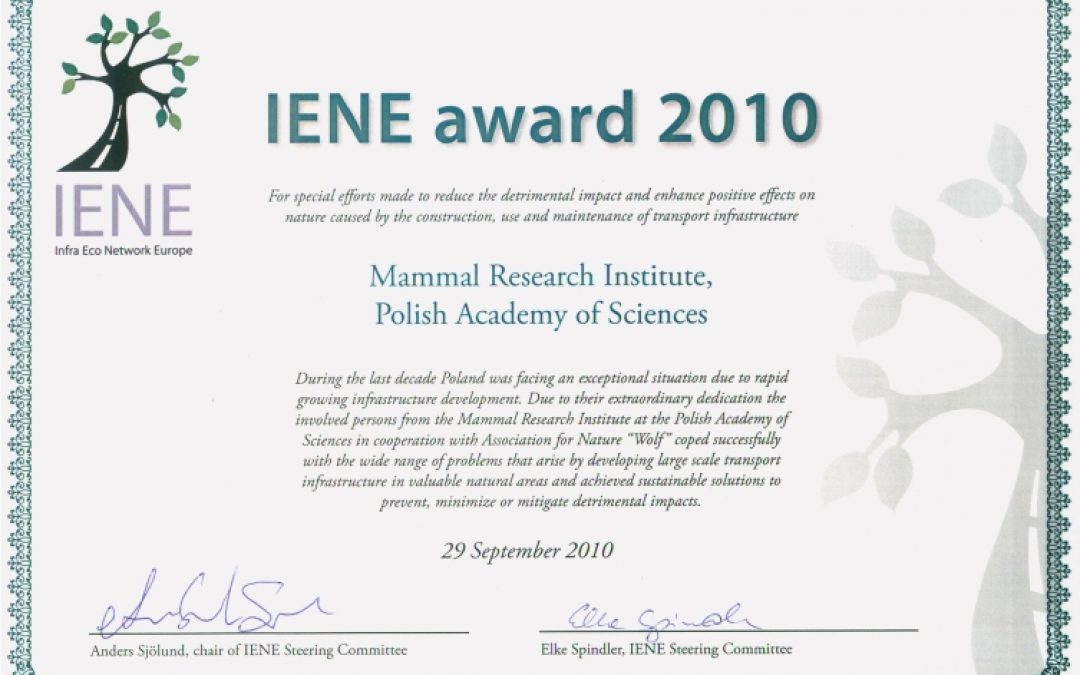The Mammal Research Institute Polish Academy of Sciences and The Association for Nature “Wolf” received an Infra Eco Network Europe (IENE) Award 2010 for special efforts made to reduce the detrimental impact and enhance positive effects on nature caused by the construction, use and maintenance of transport infrastructure.
The IENE Award appreciates special efforts made to reduce the detrimental impact and enhance positive effects on nature caused by the construction, use and maintenance of transport infrastructure. Such projects or initiatives aim at protecting biodiversity, counteracting landscape fragmentation, reducing animalvehicle mortality and enhancing traffic safety with regard to wildlife. This includes technical measures as well as mitigation plans or activities, at local, national or regional scale.
The awarded project included following activities:
- Based on regular national inventory of wolf and lynx and using geographic information system (GIS) tools the research team described factors affecting distribution of both species, extend of suitable habitats, and delineated network of ecological corridors linking suitable habitats of large carnivores in the entire Poland. The analysis became a basis for the project of ecological corridors linking Natura 2000 sites in Poland, which the team elaborated for the Ministry of Environment. This project has been widely used for regional projects implementing ecological corridors into spatial plans of provinces.
- To improve the knowledge about requirements for permeability of roads and railways as well as about proper location, size and number of wildlife crossing structures the research team elaborated special guidebook entitled “Animals and roads: Methods of mitigating the negative impact of roads on wildlife”. Since 2004 three editions of the book have been published, and over 3500 copies distributed mostly among road planners, investors, engineers and officers of institutions responsible for nature conservation. The team also elaborated technical report about methods of monitoring the usage of wildlife crossing structures by fauna for the Ministry of Transportation. Meantime, conducted numerous workshops and trainings were conducted for road designers focused on these issues.
- An international conference entitled “Implementation of the ecological corridors project in Poland” was organised in Białowieża in November 2008, in which over 150 specialists participated and shared their experiences. Proceedings of the conference were published as a book, also freely available on-line. In order to spread an idea of crucial role of protection of ecological connectivity the research team published numerous articles and led dozens of workshops.
- Most of projects for planned motorways and express roads were analysed and numerous measures improving habitat connectivity was recommended (e. g. wildlife crossing structures, various compensations).
The most important effect of the project is that presently, we can observe that taking into consideration the corridors network and permeability for animals in the planning of linear infrastructure became a rule, which brings beneficial effects for the natural environment. As a consequence of the endeavour Poland has a big chance not to recure the main mistakes made by Western European countries and build a modern transportation infrastructure with possible lowest negative impact on the habitat connectivity and populations of rare animals.

(KN)
